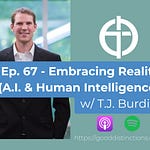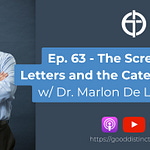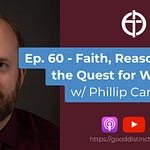First of five sessions on the Holy Mass:
Introduction
What is the Mass? Most practicing Catholics understand that Mass is important. It is something they should go to. But the opinions about Mass are all over the ideological spectrum. For this series, my hope is to share what the Mass is from the Mind and Heart of the Church. I have my opinions about liturgical aesthetics, architecture, art, and the like, but I am going to try here to stick to principles. I make my promise here to you that if I offer an opinion, I will explicitly make sure that you know it is an opinion.
So, today, in part 1 we will be answering the broad question: What is the Sacred Liturgy? We are going to be going lightspeed over a vast amount of ground, but I hope that it is, nonetheless, sufficiently explained. In part 2 - 5, we will be looking at the Introductory Rites, the Liturgy of the Word, the Liturgy of the Eucharist, and the Concluding Rites. These four main divisions are packed with theological meaning, symbolism, and beauty. I am thrilled to be sharing it with you.
The Sacred and Divine Liturgy
Etymology of the Word “Liturgy”
We should begin our exploration of the Sacred Liturgy by understanding what that word liturgy means. What is the liturgy? It is certainly a strange word to an English-speaker. Liturgy comes from two Greek words: leitos meaning public and ergo meaning to do. The Greek word for liturgy is leitourgos which is the same as the Latin word lictor, which both mean a public servant.
In ancient Athens, public service was done by wealthier citizens by using their own wealth. This public service could be the manager of a gymnasium, the chorus singers in a theater, one who provides a banquet, or someone who funds and offers ships used for war to the state. In the Greek Old Testament, the term liturgy meant any kind of general service in the temple.
The author of Hebrews states, “But as it is, Christ has obtained a ministry (Greek: leitourgos) that is as much more excellent than the old as the covenant he mediates is better, since it is enacted on better promises (Heb. 8:6).” So, the meaning of liturgy in the New Testament is established as the actions of the priest after the order of the High Priest Jesus Christ.
Since we are speaking of terms, it is worth mentioning that in the Eastern Catholic Churches, the term liturgy is only used to describe the Divine Liturgy, that is, the celebration of the Sacrifice of the Holy Eucharist. In the West, including the Latin Rite, the term liturgy is used for the Sacred Liturgy, which is the Holy Sacrifice of the Mass. But, liturgy is also used for all official services, all the various rites, ceremonies, prayers, and sacraments of the Church. —--------------
We could also ask what liturgy is not. Liturgy is not private devotions. Devotional practices are indispensable and beautiful expressions of the heart of man being offered in love to God. Liturgy, on the other hand, is primarily what God is doing for us, through the ministry of the Church, in which we enter in and take part. In the Liturgy, God is reaching into our humanity, as He did when the Son became Flesh, and lifting us up to be more like Him.
St. Justin Martyr records around the year 164 A.D. what the Liturgy looked like in his day, early in the history of the Church. The full quotation can be found in paragraph 1345 of the Catechism of the Catholic Church, but I will summarize it.
First, the Lessons are read. The Lessons are the Old and New Testament Scripture readings. Then a sermon is given by the bishop. There are prayers over the people, both those present and those throughout the whole world. The Sign of Peace is exchanged. The offering of bread and wine and water are brought up by the deacons. There is a lengthy prayer of thanksgiving done by the bishop. The bread and wine are consecrated by the words of Christ spoken at the Last Supper and they become the Eucharist. The people then acclaim Amen. Then, Holy Communion is distributed to those present and then taken to those who cannot be in attendance.
Here we see that there is a structure to the Sacred Liturgy and there is human involvement and participation. But, as we will come to see, the Sacred Liturgy is about the work that God has done and is doing, in which we enter in and take part.
Liturgical Diversity in the one, holy, catholic, and apostolic Church
Over the next few sessions, we will be exploring the Holy Mass of the Latin Rite using our current Missal. But I will also be touching on some historical points of references in the Roman Missal of 1962 and before. And I will also be bringing in elements of the Divine Liturgy of St. John Chrysostom used in the Byzantine Rites. What the Liturgy is, which is our subject for the remainder of today’s session, does not change from one form or expression of the Liturgy to another. However, there is a beautiful, legitimate liturgical diversity within the one, holy, catholic, and apostolic Church of Jesus Christ.
Over the last centuries, the Church has been welcoming back many groups of Byzantine Catholics into full communion with the Pope in Rome. These Byzantine Greek Churches are called sui iuris because they govern themselves, under the authority of the Pope, but they retain their language, customs, rituals, and the like. Likewise, there are other non-Byzantine Eastern Catholic Churches in full communion with Rome. Thus, the Catholic Church is far broader than just the Latin Rite, though the Latin Rite is the largest.
What is the Definition of the Mass?
Now we have a working understanding of the Sacred Liturgy as transcending each specific Rite of the Catholic Church. But what is it? What is the Mass?
Dr. Scott Hahn of Franciscan University is fond of referring to the Mass as the continuation through space and time of the incarnation. Dr. David Fagerberg of Notre Dame speaks of it in highly technical terms: The perichoresis of the Trinity kenotically extended to invite our synergistic ascent into deification.
There is a time for academic and technical explanations of the Mass! I, for one, love them! But what about the average Catholic in the pew or the lapsed Catholic? Surely there is a way to define the Mass that is in simpler terms without watering down the meaning.
I will be repeating the following about three thousand times over the coming weeks because it is vital to our understanding of the Mass. At any rate, here it is:
The Most Holy Sacrifice of the Mass is the perfect self-offering of God to the Son to God the Father in the power of God the Holy Spirit in which we are invited to participate and grow in our communion with God. Put even more simply: the Mass is the self-offering of the Son to the Father in the Spirit, in which we are invited to take part.
What is the Sacred Liturgy “For”?
Now that we have defined what the Mass is, then we can ask: What is it for? Why do we go to Mass? For many, it is a checking of the boxes. Yes, I went to Mass on Sunday and received my “spiritual vitamin pill.” But is that it? Is it about “getting something” out of Mass? Is it primarily something we are doing?
From our definition, we know that Mass is the self-offering of the Son to the Father in the Spirit, in which we are invited to take part. It is something that God is doing and we are privileged to be beckoned to the Wedding Supper of the Lamb! So, what is Mass for? Why do we go? We go to encounter and worship God in the authentic way that He desires and be transformed by that encounter.
There are two main ends of the Holy Mass: the glorification of God and the sanctification of man. Through the Sacraments (beginning with Baptism), God who became one of us dwells within us as in a Temple and makes us like Himself. Through this communion and union, we are made holy by God; this is the sanctification of man.
As St. Irenaeus says in the 2nd Century: “The glory of God is man fully alive, but the life of man is the vision of God.” Apart from true worship, how can we be formed in the vision of God? How can we be fully alive and thus glorify God by our lives apart from the Mass? We cannot! As St. Padre Pio said, “It would be easier for the world to survive without the sun than to do so without the Holy Mass.”
So, what is the Mass for? To glorify God and to allow His Sacred Action to make us holy.
Re-presentation of the Paschal Mystery
What is the one sacrifice of Christ?
To understand the Sacred Action of the Holy Eucharist, we have to travel back in time two thousand years to Jerusalem. The Most Holy Sacrifice of the Mass is the presenting once more, the “re-presentation,” of the One and only Sacrifice of Jesus Christ. It is the coming present once again to our senses, through the mystery of God, of the entrance into Jerusalem of Christ, the Last Supper, His suffering, His death on the Cross, His Resurrection, and His Ascension into Heaven. The Holy Mass marks all of these things, and makes them present to us, here and now, outside of time.
The Holy Mass is a memorial of Jesus’ suffering and death. It is not a reenactment nor is it mere remembering. In the Mass, by the power of God, these saving actions become truly present under the signs and symbols that God uses to communicate with us. He knows that we are flesh and blood. He knows that we are body and soul. So, He communicates with us through tangible signs, audible words, ritual actions, postures, and gestures.
The Catechism of the Catholic Church teaches,
“The Eucharist, the sacrament of our salvation accomplished by Christ on the cross, is also a sacrifice of praise in thanksgiving for the work of creation… The Eucharist is the memorial of Christ's Passover, the making present and the sacramental offering of his unique sacrifice, in the liturgy of the Church which is his Body (CCC 1359, 1362).”
In Christ, all things are restored and made new. Primarily, we enter into this saving reality through our Baptism into Christ and His Body, the Church. In Baptism, we are a new creation. Baptism then orders us to communion with Him in receiving truly and substantially His Most Holy Body, Blood, Soul, and Divinity.
The Catechism goes on to teach that,
“In the Eucharist Christ gives us the very body which he gave up for us on the cross, the very blood which he ‘poured out for many for the forgiveness of sins’… The Eucharist is thus a sacrifice because it re-presents (makes present) the sacrifice of the cross, because it is its memorial and because it applies its fruit (CCC 1365-6).”
How are the graces that Christ super-abundantly merited on the Holy Cross applied to us, almost two thousand years later? It is, first, through Baptism, but it is perpetuated in the Holy Sacrifice of the Mass. This One Sacrifice of Jesus Christ is presented once more in an unbloodied manner so that we may receive the fruits of this great gift. Thus, the Holy Eucharist has the power to forgive sins, by the blood of Jesus Christ.
United as one Body, the Church offers this One Sacrifice until the end of time for the good of the Church and the good of the whole world. Each time our Holy Mother the Church celebrates the sacred mysteries, it is Christ who is the High Priest, the Saving Victim, the Place of Sacrifice, and our Mediator between God and man. Apart from Him, we can do nothing. So, the Mass is not what we do for God. It is the perfect prayer and sacrifice offered by Jesus Christ to the Father in the Spirit because it is the whole of the saving action of Christ transcending time and space.
As lacking as we are and as sinful as we are, we enter into this reality of the One Sacrifice. Our imperfect offerings and sacrifices are united with the One Sacrifice of Jesus Christ on the Cross and are made perfect. We cooperate with the One Sacrifice and we receive the saving fruits of the One Sacrifice. By the mediation of Jesus and the power of the Holy Spirit to the glorification of the Father, we are made holy and we are transformed to be like Jesus.
Every Sunday is a Mini Easter
As Catholics, we understand that at the Mass, in true worship, this Sacred Action is not a mere remembrance or a reenactment. These realities are coming present once again. So, it is fitting that every Sunday is a Holy Day of Obligation because every Sunday is a mini Easter. How does this fit in the ancient understanding of Sabbath?
The seventh day of the week is the sabbath, a day of solemn rest, that is set aside for the Lord. This goes all the way back to the dawn of creation when God made everything in six days and then rested on the seventh. The Sabbath day also marks the work of the Lord of acting on Israel’s behalf and freeing them from slavery in Egypt.
The Sabbath is a day of rest and refreshment. Jesus shows us in the Gospels that this does not necessarily mean refraining from all work, without exception. Instead, we must realize that the poor are to be refreshed as well. And so, the Sabbath is a day of doing good for others as well.
As with many things, the New Covenant fulfills and elevates the Old Covenants. The Sabbath remains on Saturday, but Sunday is the fulfillment of the Sabbath. Sunday is the “eighth day” of the week and is symbolic of the new creation which was brought about by the Resurrection of Jesus Christ. Jesus rose from the dead on the “first day of the week” and, therefore, consecrated a new moral commandment.
We are to keep holy the day of the Lord by celebrating Sunday in an “outward, visible, public, and regular worship ‘as a sign of universal beneficence to all (CCC 2176).’” Our Sunday worship is the fulfillment of the moral command of the Old Covenant to keep holy the Sabbath day.
The Sunday celebration of the Eucharist, on the day set aside for the Lord, is the heart of the Church’s life. When we celebrate the Sunday Eucharist, we are marking the passion, death, and resurrection of Jesus Christ. In this way, every Sunday of the year is a mini-Easter.
The faithful gather together each Sunday and celebrate in the liturgical life what Christ has done, Who He is, what He has taught, and what He is doing through us today. Therefore, we go to church each Sunday, as well as holy days of obligation.
As St. John Chrysostom said,
“You cannot pray at home as at church, where there is a great multitude, where exclamations are cried out to God as from one great heart, and where there is something more: the union of minds, the accord of souls, the bond of charity, the prayers of the priests.”
Catholics are obligated and privileged to participate in the Holy Mass on Sundays and other holy days of obligation. The Eucharist is the beginning of our life of grace, and it is the apex of the mountain for which we yearn. Unless we are excused for a serious reason such as illness or the care of an infant or dispensed by our pastor, we fall into grave sin if we skip on going to Mass on Sundays or holy days of obligation.
We are not saved by ourselves. We need our brothers and sisters in Christ, and they need you and me. We must be present in the Parish to pray as a Eucharistic assembly. Of course, there are many places in the world where there is a severe shortage of priests. In these cases, even, the people gather to break open the Word and pray together.
God rested on the seventh day from the work of creation. Therefore, the Lord’s Day, the fulfillment of the Sabbath, must be marked by an enjoyment of “adequate rest and leisure to cultivate… familial, cultural, social, and religious lives (CCC 2184).”
As much as possible, we are to refrain from
“engaging in work or activities that hinder the worship owed to God, the joy proper to the Lord’s Day, the performance of the works of mercy, and the appropriate relaxation of mind and body (CCC 2185).”
We should not, however, neglect our duties to our family. As St. Augustine teaches, “The charity of truth seeks holy leisure – the necessity of charity accepts just work.”
The Catechism of the Catholic Church also teaches that,
“In respecting religious liberty and the common good of all, Christians should seek recognition of Sundays and the Church's holy days as legal holidays. They have to give everyone a public example of prayer, respect, and joy and defend their traditions as a precious contribution to the spiritual life of society (CCC 2188).”
Even if our society does not recognize the Risen Lord, nonetheless, it is our joy and duty to witness to the joy of His Resurrection each Sunday. Every Sunday is a mini-Easter and should be celebrated as such!
The Mass - True Worship and True Culture
We need the Holy Mass, but so does our modern culture. We have lost a sense of wonder and awe. Wonder and awe at the glory of the natural order is lost. Philosophers, theologians, political thinkers, and historians have debated the concept of the perfect world forever. In our fractured state, true consensus does not seem likely or possible in the court of public opinion. Without a concerted popular effort towards aiming at the same goal, the likelihood of achieving it is low. As to pride, it is not controversial to make the claim that most people today are either unabashedly or unwittingly self-focused. Mass helps us to get outside of ourselves because, as I hope I have shown by now, Mass is primarily what God is doing!
If we reach back in History, we see that the greatest minds of science were motivated by wonder and awe at the majesty of God’s creation. The foundational underpinnings of true progress and human flourishing comes from without, not within. What does a wonderless, blasé attitude do to a society? What becomes of culture?
Putting the “Cult” Back in Culture
What we need is to put the “cult” back in culture. Culture is connected intimately to worship. The root word is “cultus,” from which arises the English word “cult.” Cultus comes from the Latin verb colare which means “to till.” This is why we have the word agriculture (agri - field, cultus - till). In the Middle Ages, cultus came to mean adoration or veneration specifically. The prime act of worship is sacrifice. It is getting outside of oneself in order to show that worth is found outside of the self. Worship could thus be seen as “giving worth.”
So, what happens when we lose a sense of wonder and awe? It’s simple: we start to worship inwardly; we start to worship ourselves. Instead of the worship of one God, the replacement has been the worship of over seven billion “gods.” When every person is master of their own domain, then communal ties, even familial ties, begin to crumble.
What would happen if we cultivate a sense of wonder and awe in our own life? I would imagine that we would start to be more appreciative and less cynical. We would be less pessimistic and more pragmatic, if not actually optimistic. We would have a longer viewpoint and shorter fuse. We would see beauty all around us instead of fixating on the ugly. We will understand that we are not the center of the universe but will not be lost to existentialist dread.
Avoiding Existential Dread
This last thought is one of the most pressing. Given the loss of wonder and awe, our world has descended into meaningless existentialism. Shouting into the void in a primal scream is the only prescription for our nihilistic culture. Of course, if we recapture the sense of wonder and awe, then we realize that nihilism is itself nothing. We realize that there is something greater and that we are an important part of the whole.
Fear of the Lord is the Beginning of True Wisdom
Wonder and awe are not fixtures of a bygone era. They are the beginning of true wisdom. In fact, we could call them by their traditional name: “fear of the Lord.” This fear is a filial one, as a son to a father. When we begin to let God be God and understand that we are not, then we begin to see things differently. We take ourselves less seriously and take the Creator more seriously. We find ourselves, not “out there” or within, but rather where we place worth itself. This fear of the Lord and putting things right is the foundation of getting culture right. As then-Cardinal Ratzinger said in his book A New Song for the Lord: “Trivializing faith is not a new inculturation, but the denial of its culture and prostitution with the non culture.”
Let us put the cultus back in culture, tilling and cultivating a sense of wonder, awe, and amazement. There is much to be grateful for in this world. It will not take long to recognize the Giver of the good gifts who gratuitously and generously generated all things and respond in gratitude. As we will explore in the coming weeks, the very word Eucharist means thanksgiving! So, how can we pray the Mass better? Begin with humility and gratitude!
Conclusion: Worshiping God the Way that He Wants
I want to end today by emphasizing that the Mass is primarily what God is doing. Jesus Christ is our High Priest in every age of the Church’s History: in the catacombs, in the Byzantine period, in the Middle Ages, in the Renaissance, in the Counter Reformation, and up until today.
We are invited to take part in what He is doing. Truly, the worship of God becomes unintelligible if it becomes separated from the Saving Action of Jesus Christ, offered to the Father, in the Spirit. In fact, this Sacrifice of the Mass is the heart of Christian worship. If we are not celebrating the memorial of the Paschal Mystery from the heart and ministry of the one, holy, catholic, and apostolic Church of Jesus Christ, then we are not worshiping God as He desires and as He has instituted.
This is why the Catholic Church calls the Holy Eucharist the font and apex or the source and summit of the Christian life. There is no Church, properly speaking, apart from the Eucharist and the Holy Mass. To reiterate the words of Padre Pio: “It would be easier for the world to survive without the sun than to do so without the Holy Mass.”
There is so much more to say, even about the basic theological foundations of the Holy Mass, but this is just the beginning. I hope you will join me over the next four weeks as we continue to understand the Mass more fully and journey through Lent together towards Easter!












